Teledyne C-2000 User Manual

®
C-2000
AIRBORNE TELEPHONE
C-2000 User Guide
Version 1.01
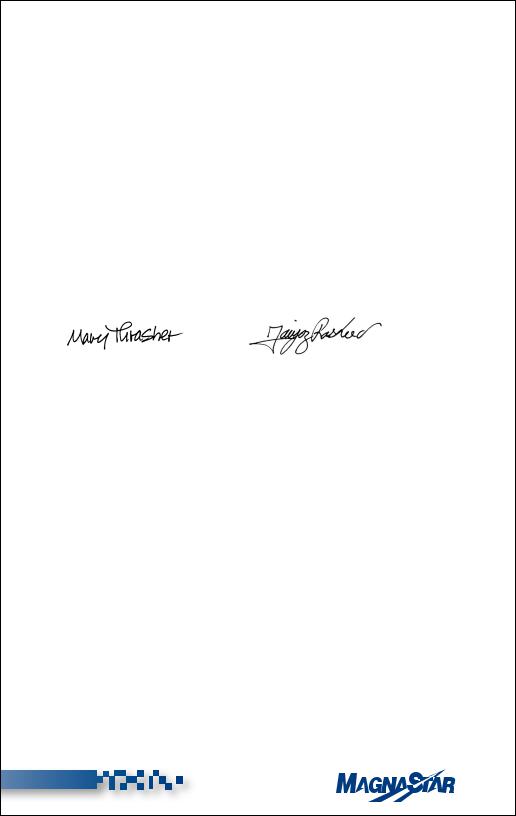
Your new MagnaStar® C-2000 system offers access to unparalleled features and quality digital connections utilizing the advanced digital Airfone network. The system is backed by a responsive, authorized service network of over 150 dealers nationwide. We are confident that you will enjoy using your new digital airborne telephone and hope that it will serve your in-flight telecommunications needs well into the future.
Your authorized MagnaStar dealer can answer most questions regarding the system you've purchased. Additionally, we welcome your comments and suggestions regarding this product and ask that you contact either of us directly at any time.
The information contained in this User Guide is to be used in conjunction with ARTU software version 4.0B or before.
Mary Thrasher |
Faiyaz Rasheed |
Product Manager, |
Manager, Product Support |
General Aviation |
Teledyne Controls |
|
|
Verizon Airfone Incorporated |
Business and Commuter Avionics |
2809 Butterfield Road |
12333 W. Olympic Boulevard |
Oak Brook, IL 60522 |
Los Angeles, CA 90064 |
630-575-1209 |
1-888-246-STAR (7827) |
Mary.Thrasher@verizon.com |
Faiyaz.Rasheed@teledyne.com |
Document number: CA 1030
August 2001
Upon the purchase of a MagnaStar® System and the execution of a MagnaStar Service Agreement, Verizon Airfone Inc. will provide Customer access to air-to-ground telecommunications and related services. Verizon Airfone Inc. is not liable for the operation or maintenance of any MagnaStar Equipment. The operating characteristics of all MagnaStar Equipment require that it be used only with Airfone Service. Customer shall be Responsible for payment to Verizon Airfone Inc. of all usage changes incurred through use of the Airfone Services.
Verizon Airfone Inc. operates under a license issued by the Federal Communications Commission (FCC). The Airfone Service is provided solely by Verizon Airfone Inc. The liability of Verizon Airfone Inc. for failure of communications is limited to call charges only. Tariff available upon request. Airfone is a registered trademark and GenStar is a trademark of Verizon Airfone Inc. MagnaStar is a registered trademark of Raytheon Company. ©2001 Verizon Airfone Inc. All rights reserved. ©2001 Raytheon Company. All rights reserved. ©2001 Teledyne Controls. All rights reserved. No part of this document may be reproduced by any means without written permission of Airfone Incorporated and Teledyne Controls.
i |
® |
(Rev. 8/04)

Table of Contents
Simply click on the titles in order to navigate through the document.
Brief History of Airfone and Raytheon
Introduction
General Information
How the System Works
I. Quick Reference Guide
II. Using MagnaStar
III. Customer Assistance
IV. SATCOM Service
V. HF Radio Service Connection
VI. Configuration Procedures
VII. Signal Coverage
VIII. Billing Procedures - Air-Ground Communications
IX. Fax and Modem Requirements
X. Troubleshooting Information
XI. Aircall Numbers Assigned to This Plane
ii |
® |
(Rev. 8/04)

Brief History of Airfone and Raytheon
Verizon Airfone Inc., Raytheon Company, and Teledyne Controls have joined forces to deliver the MagnaStar® C-2000 Digital Airborne Telephone, a General Aviation telephony product of unparalleled quality and features.
Verizon Airfone is the industry leader and premier provider of in-flight telephony services for the commercial aviation market. Since 1984, Airfone has pioneered numerous communications first and innovative developments, including: the Seatfone™ System, QuickConnect calling, data/fax calling, the all new digital Airfone® Service and ground- to-air calling, as well as other features and services.
The MagnaStar® digital airborne telephone is the most advanced and most popular digital airborne telephone system available for business aircraft. MagnaStar systems have been installed in all types of aircraft from a Beechcraft Bonanza to a Boeing 747. The MagnaStar system offers a wide selection of installation components, as witnessed by this manual. This airborne phone system utilizes Airfone’s advanced terrestrial communications network, and is backed by what has come to be known as the best customer support in the business.
In late 1996 Teledyne Controls – Business and Commuter Avionics licensed from Raytheon Company (formerly Magnavox Electronic Systems Company and now Raytheon Company) the exclusive marketing, sales and customer support rights to the MagnaStar airborne telephone product line for business aircraft. The MagnaStar system utilizes Airfone’s communications network for its inflight communications service. Raytheon will continue to manufacture and repair MagnaStar units for Teledyne Controls at their facility.
Teledyne Controls will provide marketing, sales and product support services from their Business and Commuter Avionics division located in Los Angeles, CA. Teledyne Controls, Raytheon, and Airfone are working harder than ever to make MagnaStar the best system available. Teledyne Controls will continue to utilize the existing well-established distribution and dealer network that consists of over 150 dealers nationwide.
We invite you to call us toll free at 1-888-246-STAR (7827) with any questions you may have regarding the MagnaStar system.
iii |
® |
(Rev. 8/04)

Introduction
Congratulations on your selection of the MagnaStar® C-2000 Digital Airborne Telephone. The MagnaStar system is designed to provide years of quality service and reliability onboard your aircraft. Installation by an authorized Dealer will ensure proper cabling
and integration with other onboard avionics and related systems. With proper care, your new digital airborne telephone will provide years of clear, high quality airborne communications now and well into the future.
General Information about
your new Digital Airborne Telephone
For your convenience and ease of use, the MagnaStar® C-2000 Digital Airborne Telephone has been engineered to operate in much the
same fashion as a regular, ground-based telephone. The steps required to place calls and access its features do, however, differ. For this reason it is recommended that you carefully study the step-by-step instructions provided on the following pages.
(Your Dealer has pre-programmed certain call billing and other operational preferences into your system. Your flight crew should be familiar with these customizations).
iv |
® |
(Rev. 8/04)
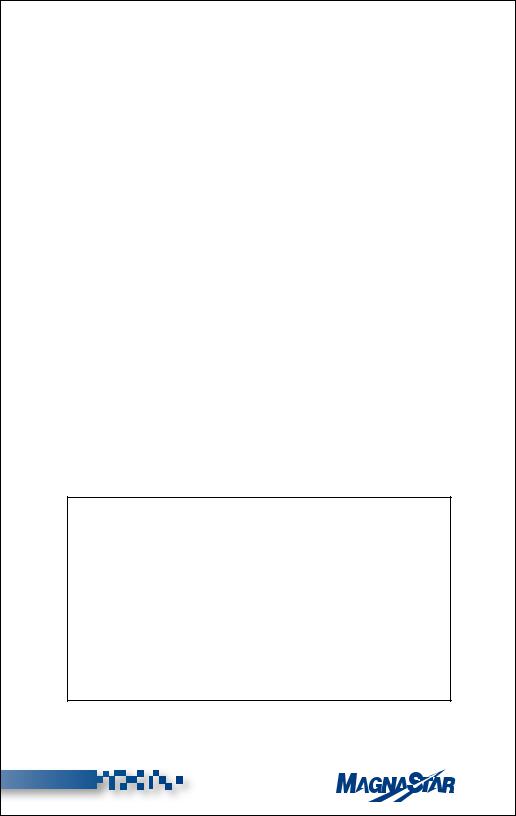
How the System Works
The MagnaStar® C-2000 Digital Airborne Telephone provides the general aviation marketplace – business, governmental and private aircraft – with access to advanced telephony services previously available only onboard commercial aircraft.
The MagnaStar system was specifically designed to provide this capability onboard these aircraft, where weight, size, and pressurization considerations are extremely demanding. As a result, the system can be used to place and receive voice calls, send data transmissions via modem as well as send and receive facsimile transmission, all from the comfort of your aircraft cabin.
A central radio processor onboard each MagnaStar-equipped aircraft coordinates and controls the cabin telephone handsets for all voice calls, data calls and in-cabin intercom functions. The system links with the Airfone Ground Station Network for channel selection and call hand-off operations.
During flight, the MagnaStar system continually scans and monitors ground-based radio cells for the best usable communications channel. The availability of a channel is indicated on the handset’s LCD display. When a call is initiated, the system searches for the ideal channel and connects the calling and receiving parties. The system will accommodate multiple handsets and two independent air-to-ground voice, fax, or data calls may be placed on the system simultaneously. Digital technology ensures reliable, clear connections at all times.
All operations are performed using the system handset. Each handset features adjustable volume with push-button controls and a telephone-style keypad with two additional keys, “+” and “End Call.”
The keypad is used to dial calls and select various options as described later in this manual. The handset’s LCD display presents useful information and “menu”-style selections thereby prompting users through the operating steps so that separate instructions are seldom required.
The handset also features a credit card reader which allows optional billing of calls to individual user accounts.
v |
® |
(Rev. 8/04)
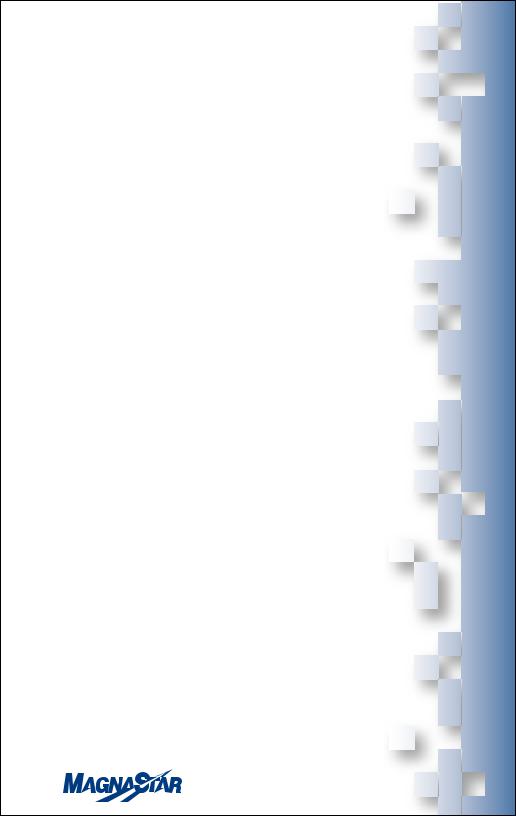
Quick
Reference Guide
A.Placing Voice Calls
B.Placing/Receiving Fax and Data Calls
B1. |
Fax and Data Calls with a C-2000 Handset |
B2. |
Fax and Data Calls with a CDBR-2 Data Station |
C. Receiving Calls |
|
C1. |
Remote Answer |
C2. |
Call Forwarding |
D.C-2000 Configuration Procedures
E.Calling the Aircraft
F.Baud Rate and Link Selection Dialing Prefixes
F1. Baud Rate Selection Prefixes for Ind. Modem Calls
F2. Link Selection Prefixes for Individual Calls
®
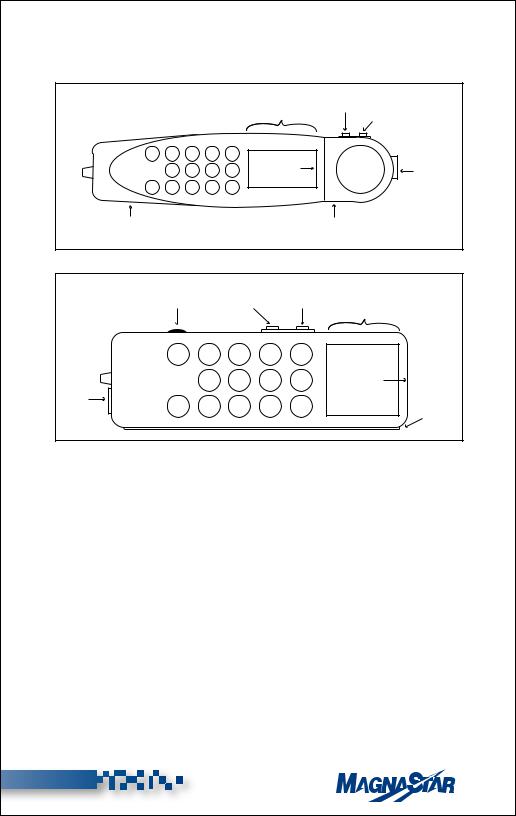
I. Quick Reference Guide
+ |
* |
PRS 7 |
GHI 4 |
1 |
|
OPER 0 |
TUV 8 |
JKL 5 |
ABC 2 |
End Call |
# |
WXY 9 |
MNO 6 |
DEF 3 |
Credit Card
Reader (on unit rear)
Backlit LCD |
Volume |
|
|
Decrease |
|
||
Display |
Volume |
||
|
|||
|
|
Increase |
|
unit S/N |
•• |
RJ-11 |
|
|
••• |
Jack |
|
|
•• |
|
Call Indicator
Light (on unit rear)
|
Call |
|
Volume |
|
Volume |
Backlit |
|
Indicator Light |
Decrease |
Increase |
LCD |
||
|
|
|
|
|
|
Display |
|
+ |
* |
PRS 7 |
GHI 4 |
1 |
|
|
|
OPER 0 |
TUV 8 |
JKL 5 |
ABC 2 |
unit S/N |
RJ-11 |
|
|
||||
|
|
WXY 9 |
MNO 6 |
|
Credit |
|
Jack |
End Call |
# |
DEF 3 |
|||
|
Card |
|||||
|
|
|
|
|
|
|
|
|
|
|
|
|
Reader |
The MACH-1 and Standard MagnaStar® Handsets have:
•Backlit LCD Display and telephone style keypad with two additional keys, “+” and “End Call.”
•Hook Switch is activated by a magnet mounted in the standard holder (depending on model and installation).
•For use without standard holder, use “+” key for off-hook, and “+” key at main menu for on-hook.
•Built in credit card reader.
•Built in signal alerter and LED.
•Two button volume control.
•Built in RJ-11 Jack.
1 |
® |
(Rev. 8/04)
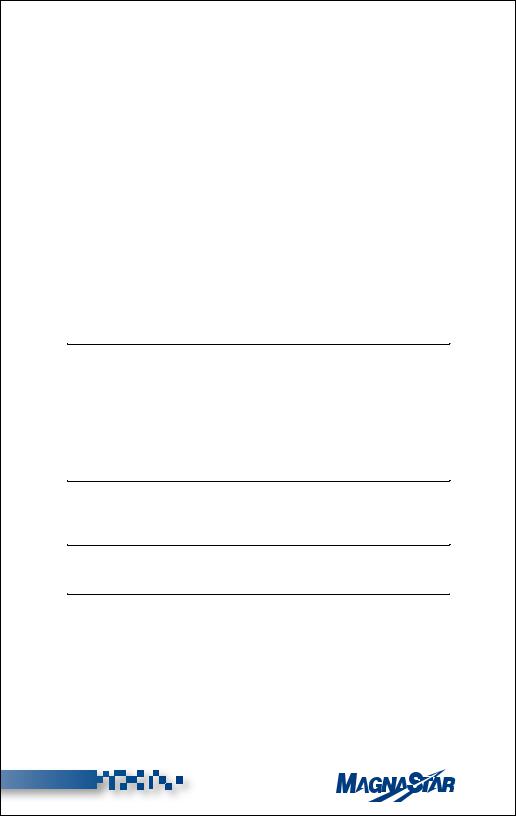
A. Placing Voice Calls
Domestic
1.Choose “1” for Voice Call.
2.Press “1” + Area Code + Number (“1” is optional). Credit Card Billing: “0” + Area Code + Number.
3.If you misdial, press “*” to clear the digits and enter the number again.
4.Press “End Call” when finished.
International
1.Choose “1” for Voice Call.
2.Press “011” + Country Code + City Code + Number + “+” (OK). Credit Card Billing: “01” + Country Code + City Code + Number + “+” (OK).
NOTE 1: If you’re using a phone or headset without a menu screen (such as a WH-10 or C.H.I.P), the steps for placing calls are basically the same as for a phone with a menu screen. However, most WH-10 phones do not have a “+” key or an “End Call” key. Therefore, anytime you are instructed to press the “+” key, you should substitute this action by pressing the hook switch down quickly (less than a second). If you press the hook switch down for more than a second, it will serve the same function as pressing the “End Call” key.
NOTE 2:“Air-Ground” MUST be displayed on the “Services” menu in order to place and receive calls. The “Services” menu is displayed when the hand set is “On-hook.”
NOTE 3: You may manually place the handset “on-hook” or “off-hook” by pressing “+.”
NOTE 4: If while setting up a call, the “OCXO Cal, Needed” message is displayed, this indicates that the ARTU requires factory calibration.
2 |
® |
(Rev. 8/04)
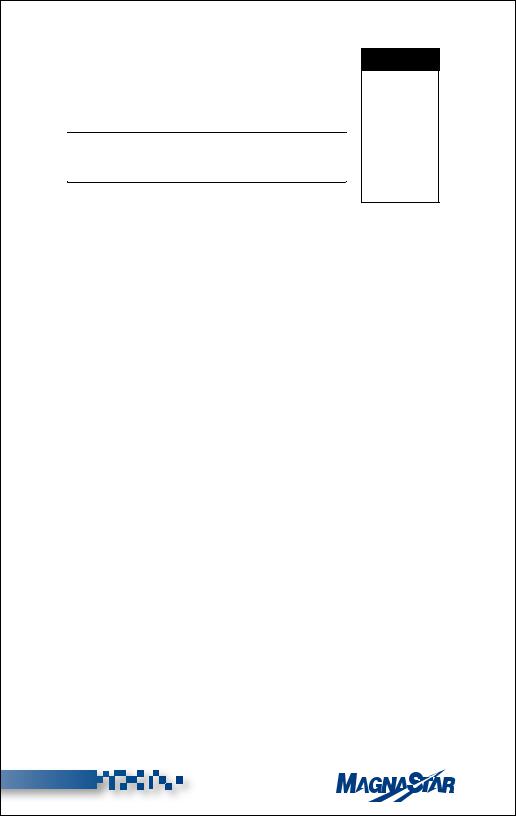
NOTE 5: The current link is displayed on the top of the “Main” menu in inverse video. You may switch to an alternate link by simply pressing the “6” key until the desired available link is displayed on the top of the menu.
NOTE 6: To setup a “TDD” call you may press “5” whether or not it is displayed. Air-Ground
NOTE 7: The following dialing formats will be accepted by the MagnaStar for all communication links:
Direct Billing
Area code + Number
“1” + Area code + Number
“00” + Country Code + City Code + Number “011” + Country Code + City Code + Number
Credit Billing
“0” + Area code + Number
“000” + Country Code + City Code + Number “01” + Country Code + City Code + Number
3
(Rev. 8/04)
Air-Ground
Voice — —>1
Inplane —>2
FAX — —>3
Modem —>4
Satcom —>6
HF Radio —>7
Aircalls —>8
Setup — —>9
OPER — —>0
Spd Dial —>*
Main Menu
®
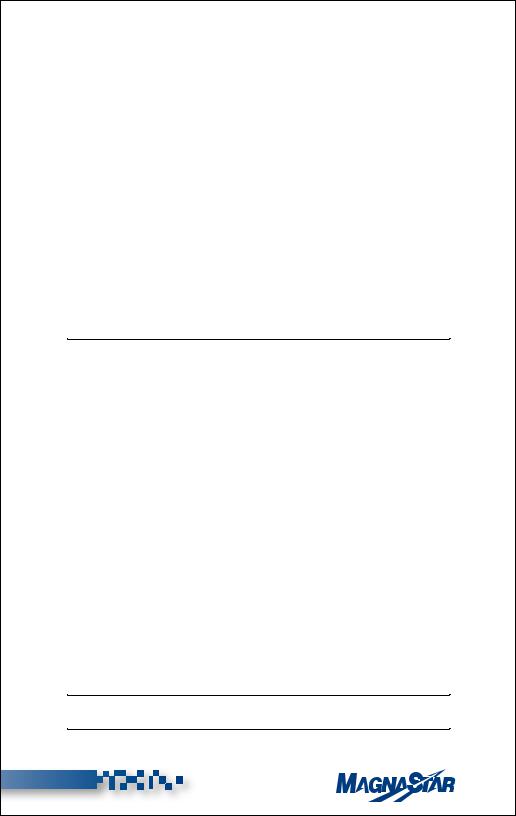
B. Placing/Receiving Fax and Data Calls
B1. Fax and Data Calls with a C-2000 Handset
Sending a Fax
1.Plug fax machine or PC into Handsets / Remote Handset data port.
2.If using a fax machine, insert document into the feeder.
3.Take handset off-hook and verify dial tone.
4.Establish a fax mode call by pressing “3” (Fax) on the C-2000 handset.
5.On the fax machine or PC enter phone # and press “Start/Transmit.”
6.After the fax call is connected, the handset may be placed in its holder.
7.At the completion of the call, press “End Call” to terminate the connection.
Note: See Section II, E1 for more information.
Receiving a Fax
1.The ground party calls the handset that the airborne fax machine is connected to.
2.The airborne party answers the call, using the C-2000 handset which is connected to the fax machine.
3.On the C-2000 handset, inform the ground party that you are going to put the call on hold to switch to fax mode. Put the call on hold by pressing “+” (Put Call on Hold), then immediately switch to fax mode by pressing “3” (Fax).
4.Take the fax machine handset off-hook (either by lifting its attached telephone handset or switching the RJ-11 hook switch to the offhook mode).
5.The ground party presses “Start/Transmit” on their fax machine.
6.The airborne party presses “Start/Transmit” on their fax machine.
7.At the completion of the call, press “End Call” to terminate the connection. The connection will be terminated automatically if the ground fax machine hangs up first.
NOTE 1: For Manual and Polling Receive operations, please see Section II, E1.
NOTE 2: The airborne fax machine should be configured with redial function off.
4 |
® |
(Rev. 8/04)
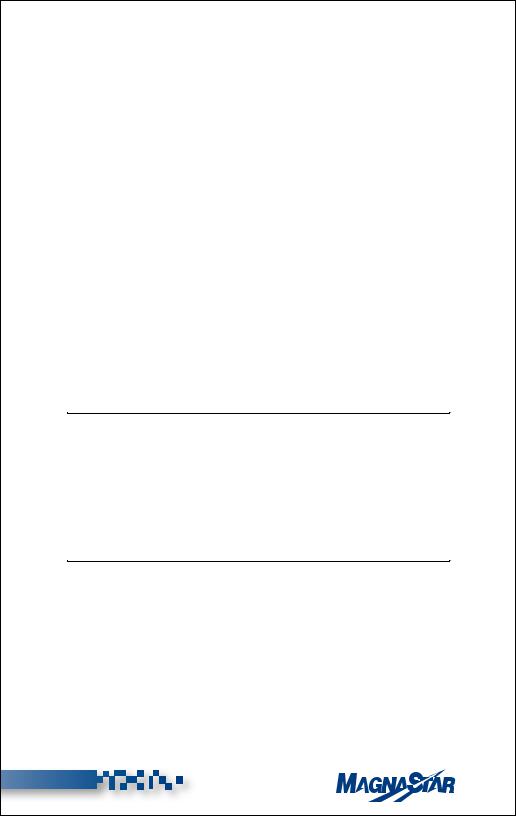
Data Calls
1.The airborne modem should be configured with its “Re-dial” function OFF.
2.Connect the modem or PC’s cord to the handset’s RJ-11 jack.
3.Prepare modem to dial telephone number using DTMF tones.
4.Press “4” (Modem) on the handset and command the modem to dial.
5.When the call is connected, place the handset in its holder.
6.Press “End Call” to end the connection.
B2. Fax and Data Calls with a CDBR-2 Data Station
Sending a Fax
1.If using a fax machine, insert the document to be sent into the feeder.
2.Establish the fax call using the PC or fax machine per manufacturer’s instructions.
Receiving a Fax
1. No interaction is needed.
Note: The ground party dials the airborne station number and the fax is received automatically. For more detail, see Section II, E2.
Data Calls
1.Connect the Modem or PC’s cord to the CDBR-2’s RJ-11 jack.
2.Configure the Modem to dial using DTMF tones.
3.Establish the modem call using the PC per the software instructions.
Note: For more information on data calls, refer to Section II, F.
5 |
® |
(Rev. 8/04)
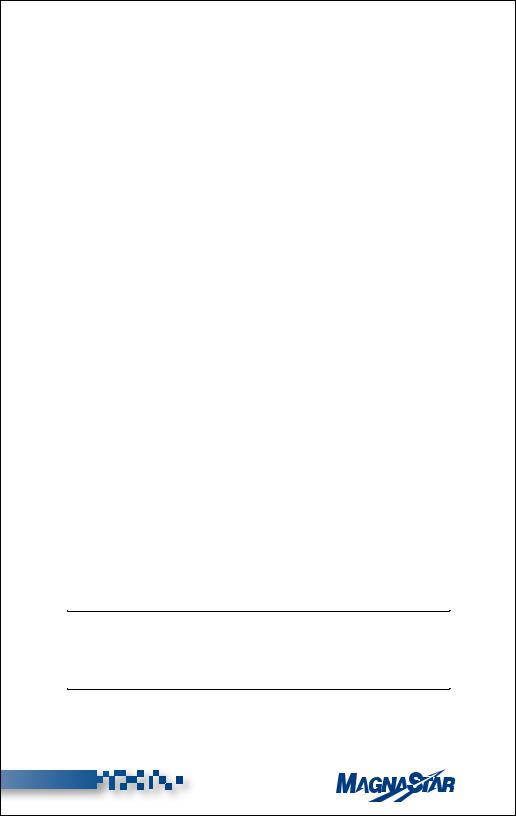
C. Receiving Calls
Steps for Air Traveler
When someone calls you, the phone will ring and the number of the ground party will appear on the display screen. If the called handset is busy (and Call Waiting is enabled), the airborne user will hear a Call Waiting (single beep) tone (press “+” to answer incoming call).
1.To accept a call, place the handset off-hook. If the handset is configured for Direct Call Pickup the calling party will be connected and the call billed to the aircraft account. If the handset is not configured for Direct Call Pickup a dial tone will alert you. Take the handset off-hook and continue with Step 2. (The number can be stored as a message for later viewing. To store the number as a message, press “#” (Store) while the handset is ringing.)
2.Press “1” to charge the call to the aircraft account. Press “2” to charge the call to a credit card.
C1. Remote Answer
When a phone in the aircraft is ringing, (Inplane, Air/Ground, or SATCOM), the air traveler can answer the call by taking a non-ringing handset off-hook and pressing “9” (Setup). At this point the menu option “Remote Answer->9” will be highlighted indicating that another phone is currently ringing in the aircraft. Press “9” (Remote Answer) to connect to the incoming call.
C2. Call Forwarding
A handset can be configured such that incoming calls (Inplane, Air/Ground, and SATCOM) are automatically redirected to another handset.
The user activates this feature by taking the handset off-hook and pressing “9” (Setup) -“6” (Call Fwd), and then enters the Destination inplane Number.
NOTE 1: If activated, Call Forwarding is indicated with highlighted text on the Source (“Fwd To x”) and Destination (“Fwd From y”) handsets (with Inplane numbers “x” and “y”) on the “Services” menu (i.e. menu displayed while handset is in bezel).
NOTE 2: If desired, more than one handset can be forwarded to the same handset.
6 |
® |
(Rev. 8/04)
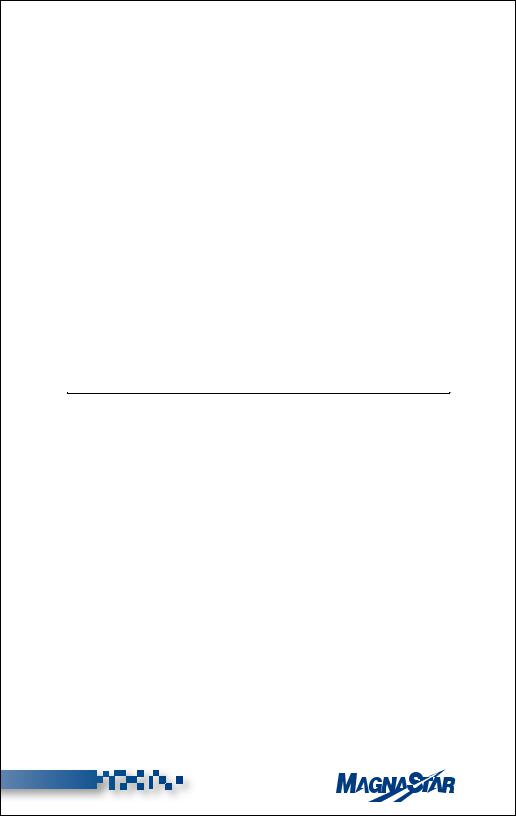
The user deactivates this feature by using any of the following options:
Option #1: Take the handset off-hook and press: “9” (Setup) -“6” (Call Fwd) - “Destination Inplane Number” (which is highlighted on menu).
Option #2: Take the handset off-hook and press: “9” (Setup) - “6” (Call Fwd) - “Current Inplane Number” (i.e. forward back to self).
Option #3: Call Forwarding is automatically cleared from memory when the ARTU unit is powered down.
D. C-2000 Configuration Procedures
The C-2000 digital handset configuration procedures are detailed in Sections VI, A through F. Please refer to those sections, along with the Table of Contents, for set-up of the available options.
E. Calling the Aircraft
Steps for the Ground Party With Direct Aircraft Dialing:
Simply dial the Direct Aircraft Dialing “888” phone number and stay on the line. The airborne party, if available, should then answer the call, and begin conversing.
NOTE: For your protection, Airfone will not provide ground callers with information relating to your aircall numbers. This means that unless you have provided this number to callers in advance, they will be unable to reach you during the flight.
7 |
® |
(Rev. 8/04)
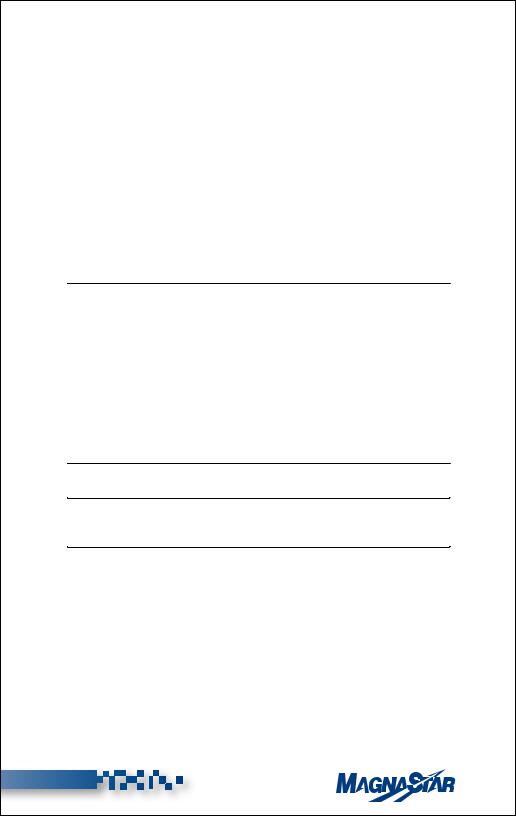
F.Baud Rate and Link Selection Dialing Prefixes
The following dialing prefix capabilities have been added as part
of software version 4.0A to facilitate the configuration of a specific data/voice call. These prefixes will override any configurations/factory default values which were previously programmed.
F1. Baud Rate Selection Dialing Prefixes for Individual Modem Calls
#4# |
Sets baud rate for call at 4800 bps |
#9# |
Sets baud rate for call at 9600 bps (if both channels |
|
are available) |
NOTE: These prefixes override the station default baud rate (See Section VI, B20)
F2. Link Selection Dialing Prefixes for Individual Calls
#61# Selects Air-Ground (disables Auto Link Switch)
#62# Selects GroundCell (disables Auto Link Switch)
#63# Selects SATCOM (disables Auto Link Switch)
#612# Selects Air-Ground then GroundCell (SATCOM not included in the rotation). Used with Genesys Airshow.
NOTE 1: These prefixes override the station default link (see Section VI, D1).
NOTE 2: Both Baud Rate and Link Selection prefixes can be utilized for the same call (order sequence does not matter)
NOTE 3: The Link Selection prefixes can be used for all call types (i.e. Voice, Fax, Modem and TDD).
8 |
® |
(Rev. 8/04)
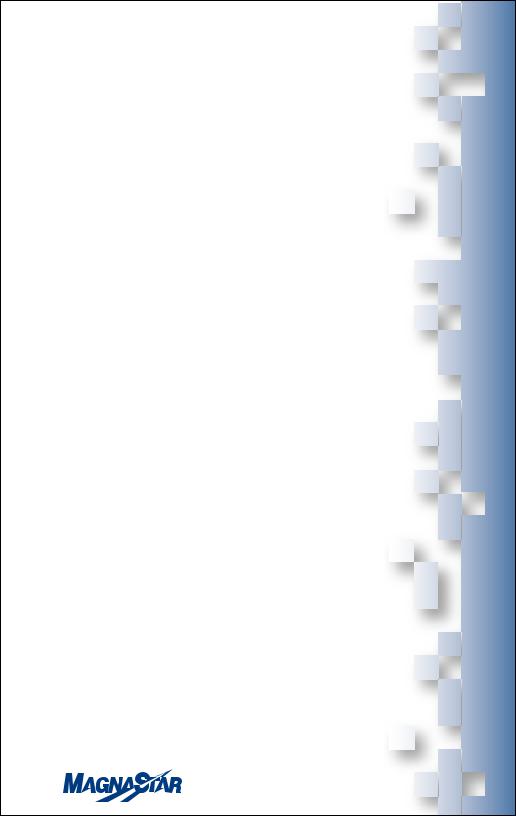
Using
MagnaStar
A.Introduction
B.Verizon Airfone Service Availability
B1. |
Display of Station or Aircraft Number |
B2. |
Reasons for Delays in Air-to-Ground Set-up |
B3. |
“OCXO Cal Needed” |
C. Air-To-Ground Calling |
|
C1. |
Placing a Voice Call |
C2. |
Placing a Call via the CPI |
C3. |
Placing a Call with the Cockpit Headset |
|
Interface Panel (C.H.I.P.) |
C4. |
Placing a Voice Call Using a Credit Card |
C5. |
Aircraft Credit Card Number Option |
C6. |
Placing A Call On Hold |
C7. |
Two Calls On One Handset |
C8. |
Conference Calls |
C9. |
Call Transfer |
D. Inplane Calls |
|
D1. |
Phone in Use |
D2. |
Remote Answer |
D3. |
Call Forwarding |
E. Facsimile Calls (Using PC or Fax) |
|
E1. |
Facsimile Calls Using a C-2000 Handset |
E2. |
Facsimile Calls Using a CDBR-2 Data Station |
E3. |
Receiving a Fax via the CPI |
F. Data Calls |
|
F1. |
Data Calls Using a C-2000 Handset |
F2. |
Data Calls Using a CDBR-2 Data Station |
F3. |
Baud Rate Selection Prefixes for Ind. Modem |
|
Calls |
F4. |
Link Selection Prefixes for Individual Calls |
®
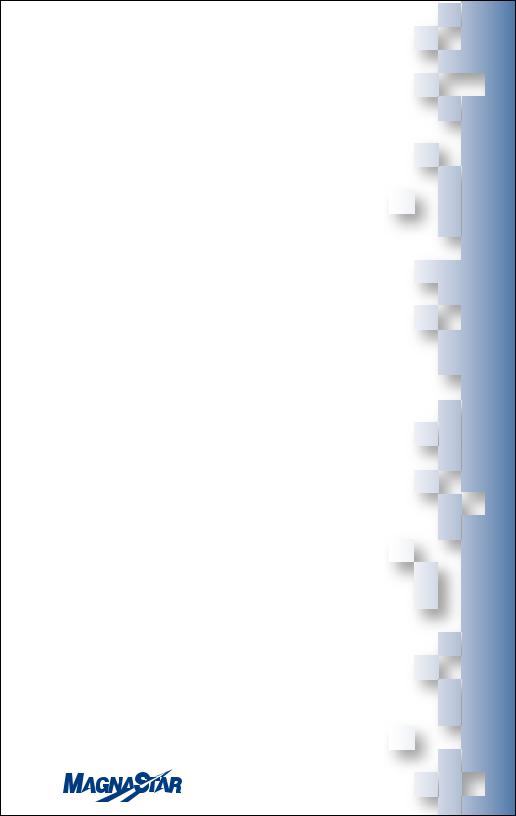
G.Telecommunication Device for the Deaf (TDD)
H.Ground-to-Air Calls
H1. Receiving Calls In-flight
H2. Receiving a Call via the CPI
H3. Remote Answer
H4. Call Forwarding
H5. Viewing/Responding to Stored Messages
H6. Viewing an Aircall Number
H7. Personal Aircall Numbers
I. Directory Assistance
®
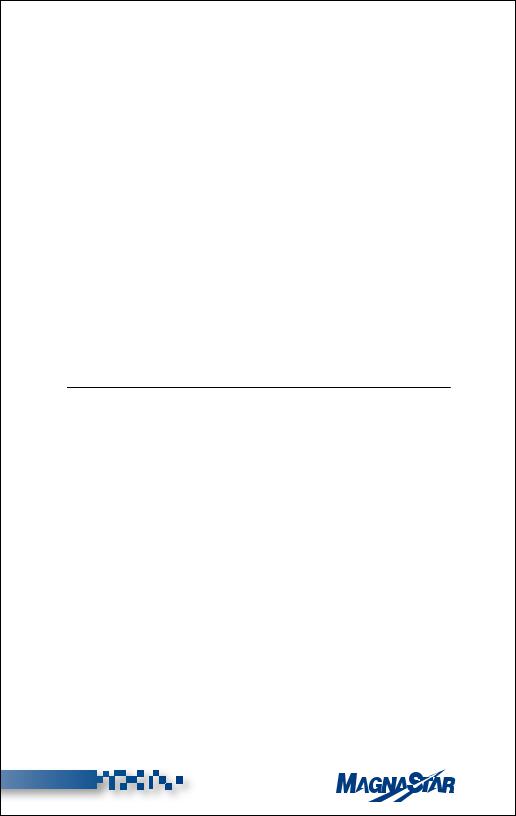
II. Using Your MagnaStar® Digital
Airborne Telephone
MagnaStar C-2000 Digital Airborne Telephone System
Operating Instructions
A. Introduction
All normal operations of the MagnaStar C-2000 Digital Airborne Telephone System are performed using the system’s handset(s). Each handset has a display and a telephone-style keypad with two additional keys, “+” and “End Call.” The keypad is used to dial calls
and select various options as described later in this manual. Information is provided to the user through a Backlit LCD display 10 characters wide and up to 13 lines long. While the display prompts the user at each step, the user does not have to wait for the prompts to proceed with the call sequence. A credit card reader is built into the handset
to allow optional billing of calls to individual user accounts. A twobutton volume control on the side of the handset increases or decreases the sound level to suit the user. The following sections provide detailed operating instructions.
NOTE: The standard MagnaStar handset has a hook switch which is activated
by a magnet in the holder. Removing the handset from the holder establishes “off-hook” conditions and makes it available for use. Returning the handset to the holder establishes “on-hook” conditions. Optional handset installations, including custom holders and portable handsets which do not provide this hook switch function. To place these handsets “off-hook,” press “+.” To put these handsets back “on-hook,” press “+.” The standard MagnaStar handset may be operated as an optional handset installation by pressing “+” while still in the holder to cause it to go “off-hook.” This mode provides access to the MagnaStar off-hook features without removing the handset from the holder, thus providing data calls without the removal of the handset.
In all procedures of this Users Guide, words shown in parentheses ( ) are associated with the respective digital handset key presses.
9 |
® |
(Rev. 8/04)

B. Verizon Airfone Service Availability
While the handset is “on-hook” the “Services” menu is displayed. When the handset is placed “off-hook” the Services menu remains approximately five seconds. It is not necessary to wait for the “Main” menu before dialing. If “Air-Ground” does not appear on the handset’s LCD display, the Air-Ground service is not available. If a call is attempted, it will be connected when a channel is acquired.
NOTE 1: The station default link (see SectionVI, D1) is displayed on the Services Menu in inverse video.
Services
Inplane
Air-Ground
GroundCell Satcom
HF Radio
____________
Inplane: _____
Term Id:_____
(____)
_____-______
NOTE 2: The current link is displayed on the top of the “Main” menu in inverse video. You may switch to an alternate link by simply pressing the “6” key.
NOTE 3: Press “5” to set up a “TDD” whether or not it is displayed.
Other services available through the MagnaStar C-2000 system include:
1.Inplane - Voice and data intercom calls can be placed between any of the handsets on the aircraft (see Section II, D).
2.GroundCell - An optional capability is available to connect the MagnaStar C-2000 to a Cell Phone Interface, for communications capability while the aircraft is on the ground (see Sections II, C2, E3
and H2).
3.SATCOM - An optional capability is available to connect the MagnaStar C-2000 to a SATCOM system, should the aircraft be so equipped. (see Section IV).
4.HF Radio - An optional capability is available to connect the MagnaStar C-2000 to an HF radio through the aircraft audio system, should the aircraft be so equipped (see Section V).
B1. Display of Station or Aircraft Number
In addition to listing the available services, the screen shows the assigned:
a.Inplane number.
b.The Station Aircall phone number, or Aircraft Aircall phone number. If both types of numbers are assigned the Station Aircall number will be displayed.
c.The SATCOM Station Terminal ID, or SATCOM Aircraft Terminal ID if no Station Terminal ID is assigned.
NOTE 1: For details on configuration, see Section VI.
10 |
® |
(Rev. 8/04)
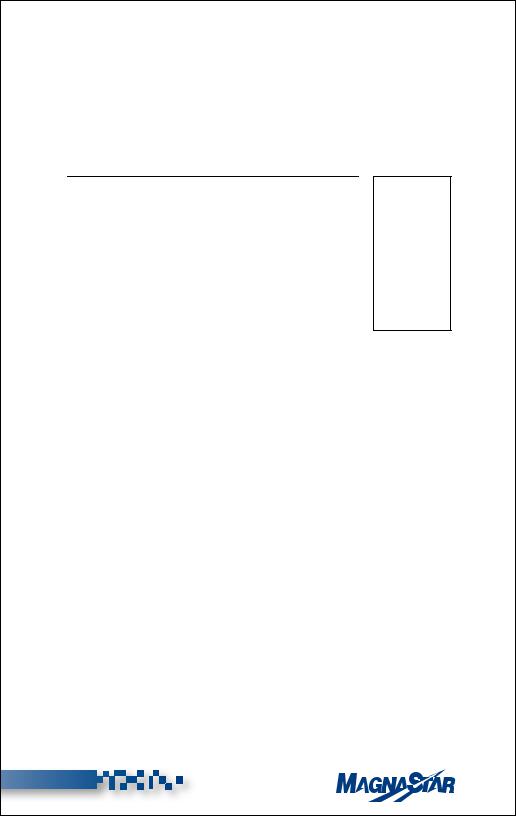
NOTE 2: If you’re using a phone or headset without a menu screen (such as a WH-10 or C.H.I.P), the steps for placing calls are basically the same as for a phone with a menu screen. However, most WH-10 phones do not have a “+” key or an “End Call” key. Therefore, anytime you are instructed to press the “+” key, you should substitute this action by pressing the hook switch down quickly (less than a second). If you press the hook switch down for more than a second, it will serve the same function as pressing the “End Call” key.
NOTE 3: Upon initial start-up of the aircraft, the C-2000 will go through a system test and warm-up period of 5-10 minutes. Until then, service is not available and calls attempted will be held until the system is ready (as long as the handset remains off-hook). Inplane, SATCOM and HF Radio services are available during this period.
B2. Reasons for Delays in Air-to-Ground Set-up
The “Acquiring & Waiting” menu displays one of the following messages if set up for air/ground is delayed:
Voice — —>1
Inplane —>2
FAX — —>3
Modem —>4
TDD — —>5
Aircall —>8
Setup — —>9
OPER — —>0
Spd Dial —>*
Main Menu
“Ground Station Out Of Range”
if there is no signal being received from any ground station.
“Waiting on next available Air-Ground channel”
if the MagnaStar system is searching for an available channel.
“Both Air-Ground Channels In Use”
if both ARTU channels are currently in use.
“Both Channels In Use Due To Wideband Modem Call” if a 9600 bps call is currently in progress.
B3. “OCXO Cal Needed”
This message will be displayed on the “Acquiring & Waiting” Menu when the ARTU requires factory calibration.
C. Air-To-Ground Calling
Two independent voice, fax or data calls can be made simultaneously with the MagnaStar C-2000.
When the handset is placed off-hook, the main menu is displayed and a dial tone is heard on the handset speaker. To select the type of service or Set-up option, press the indicated keypad number.
To terminate any dialing sequence and return to the main menu display, press “End Call.”
11 |
® |
(Rev. 8/04)
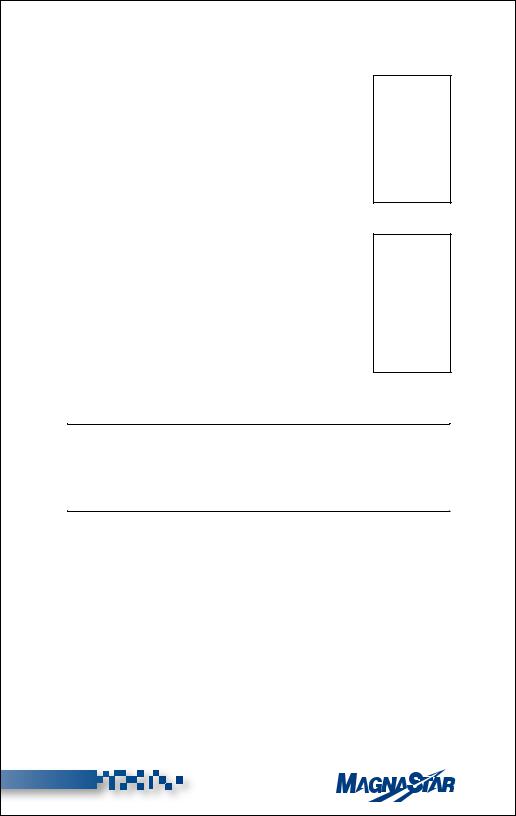
C1. Placing a Voice Call
Domestic
Place the handset off-hook. Choose “1” (Voice), then enter “1” + Area Code + Number. The number will be displayed for approximately one second before it is sent. The digit “1” before the area code is optional and need not be entered.
International
Place the handset off-hook. Choose “1” (Voice), then enter “011” + Country Code + City Code + Number. Because international telephone numbers vary by the number of digits, pressing “+” (OK) after the number has been entered will send it immediately. If “+” (OK) is not pressed, there will be a ten (10) second delay before it is sent.
Once the number has been sent, “Acquiring AirGround Channel” should appear on the “Acquiring & Waiting” menu. If there is a delay, one of several messages will be displayed giving an explanation (refer to Section II, B2).
Enter
Telephone
Number
(___)
____-_______
Air-Ground Redial —>+ Help — —># Spd Dial —>*
Acquiring
Air-Ground
Channel
Waiting on next available Air-Ground channel
NOTE: If you make a mistake when entering a number, press “*” to clear the digits and dial the number again.
To end call, place the handset on-hook or press “End Call.”
NOTE: The following dialing formats will be accepted by the MagnaStar for all communication links:
Direct Billing
Area code + Number
“1” + Area code + Number
“00” + Country Code + City Code + Number “011” + Country Code + City Code + Number
Credit Billing
“0” + Area code + Number
“000” + Country Code + City Code + Number “01” + Country Code + City Code + Number.
12 |
® |
(Rev. 8/04)
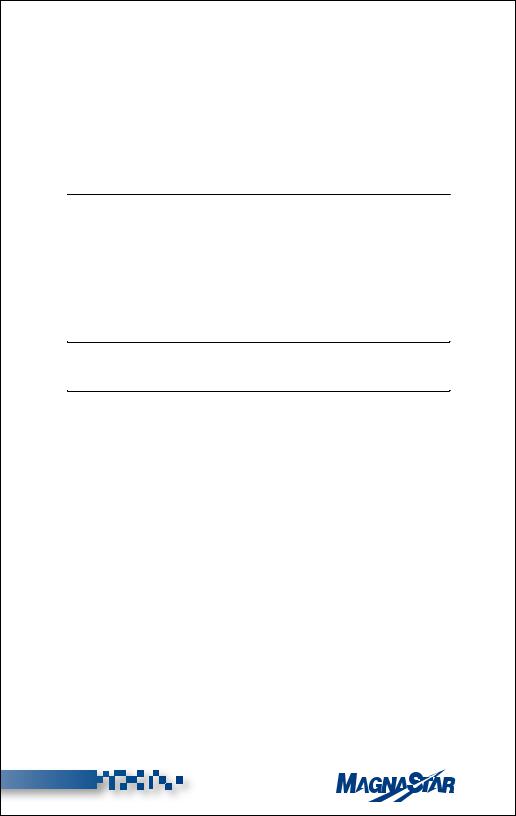
C2. Placing a Call via the CPI
Auto Link Switch Enabled - To place a call using a Cell Phone Interface (CPI) with Auto Link Switch enabled is no different than using the Air-Ground link. Place the handset off hook and press “1” for voice, “3” for Fax or “4” for Modem. Dial the ten (10) digit phone number of the party you are trying to reach. If the MagnaStar system is unable to see a usable ground station within range it will auto link switch the call to the Cell Phone Interface unit.
NOTE: Auto Link Switch must be enabled prior to the call attempt (see Section VI, D2)
Auto Link Switch Disabled - If Auto Link Switch is not enabled you may manually select the “GroundCell” link. To select the link press the “6” key until “GroundCell” is displayed on the top of the “Main” menu in inverse video. Press “1” for voice, “3” for Fax or “4” for Modem and dial the ten digit telephone number you wish to reach.
NOTE 1: The Cell Phone Interface (CPI) takes input from the Weight On Wheels switch. On take off the cellular link will be disabled.
NOTE 2: Credit Billing is not applicable to GroundCell calls.
13 |
® |
(Rev. 8/04)
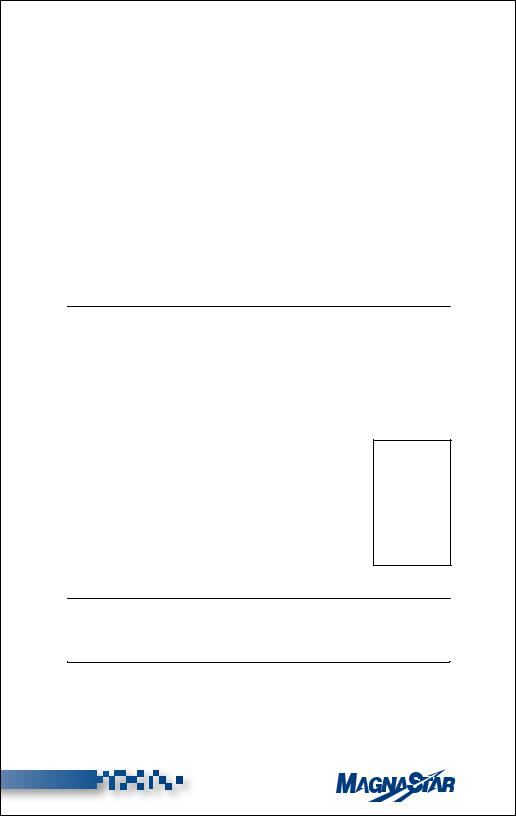
C3. Placing a Call with the Cockpit Headset Interface Panel (C.H.I.P.)
The C.H.I.P is intended to allow the cockpit crew to place or receive phone calls through their existing audio control panel. It may also be mounted in the cabin and used with a headset and mic as an alternative to a handset. The C.H.I.P. functions like a WH-10 analog phone with the addition of a few pushbuttons.
The Hook Switch pushbutton is used to take the headset “On-Hook” and “Off-Hook.”
The Flash Hook pushbutton has two functions. A short flash places a call on hold and allows the user to conference another call. A long flash will end your call and back you up to the main menu to allow another call.
The Volume pushbuttons adjust the headset volume.
NOTE: For programming see Section VI, B18 (CDBR-2 and Remote Set Up).
C4. Placing a Voice Call Using a Credit Card
Normally all calls made with the MagnaStar C-2000 are automatically charged to the aircraft’s billing account. If desired, a call may be charged to a personal credit card instead. Calls made using a personal credit card will be billed at commercial rates.
Place the handset off-hook. Choose “1” (Voice), then enter “0” + Area Code + Number. At the “bong” tone, slide your credit card through the handset slot with the magnetic stripe facing inward.
For international calls, choose “1” (Voice), then enter “01” + Country Code + City Code + Number +“+” (OK) key. A “bong” tone and the display screen will prompt you to slide your credit card through the handset slot.
Pass
Credit Card Thru Slot
on Right —>2
Keypad
Entry — —>+
Exit — — —#
NOTE 1: If you make a mistake when entering either the phone number or any additional information, press “*” to clear the entered digits and re-enter the information.
NOTE 2: Refer to the Credit Billing dialing formats listed in Section II, C1.
To end a call, press “End Call” and place the handset on-hook.
14 |
® |
(Rev. 8/04)
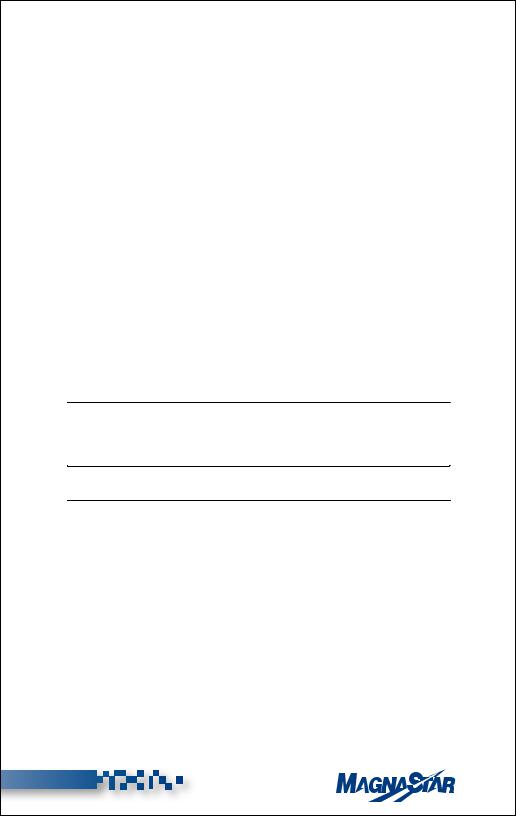
C5. Aircraft Credit Card Number Option
The air traveler has the option to store and use one credit card number for the entire flight and does not require the re-entry of the card number for each call. The system must first be configured for credit mode (see Section VI, B3). The software default value is direct billing mode.
With Direct Billing disabled for the aircraft, this feature allows a user to swipe a card which causes all calls made from any location on the aircraft (except the handset(s) configured as a Cockpit Station) to be billed to this credit card account. Calls made from Cockpit Station(s) will be billed to the aircraft account.
The user activates this feature by taking the handset off-hook and pressing “9” (Setup) - “8” (Credit) - “1” (Enter Aircraft Credit Card Number), and then sliding the credit card through the handset card reader slot. Your call will be routed to an Airfone Operator.
The user can manually clear the stored credit card number by taking the handset off-hook and pressing “9” (Setup) - “8” (Credit) - “2” (Clear Aircraft Credit Card Number). The credit card number is also erased once power is removed from the ARTU for more than 30 seconds. To enable this feature follow these directions.
NOTE 1: All direct dialed calls made on the “Cockpit” Station handset(s) will be billed to the aircraft account number regardless of the system call billing mode.
NOTE 2: The C-2000 system accepts all major credit cards.
NOTE 3: The Aircraft Credit Card Number Options bills all calls (except those calls from handsets configures as “Cockpit”) to the entered credit card.
C6. Placing a Call On Hold
A call may be placed on hold at any time by pressing “+” (Put Call on Hold). The party on hold will hear silence. To return to the call, press “#” (Go Back).
15 |
® |
(Rev. 8/04)
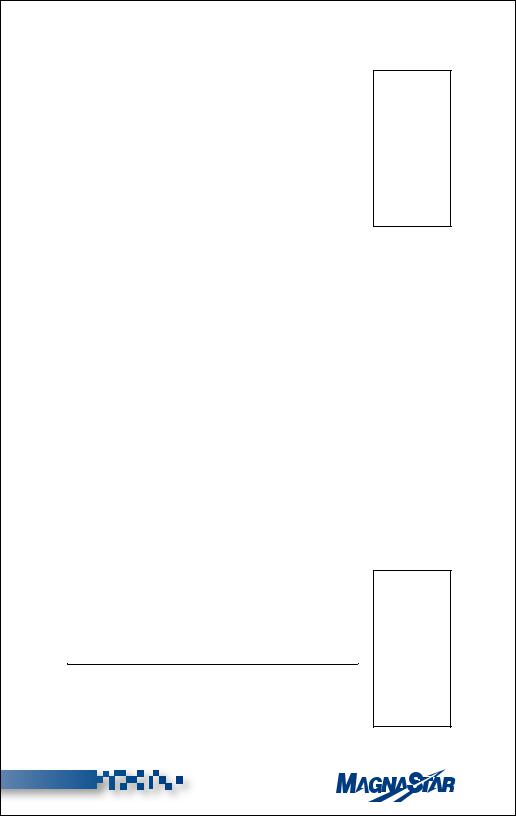
C7. Two Calls On One Handset
Should you wish to converse privately with two different parties at the same time, two independent calls can be placed on the same handset. While conversing with the first party, place the call on hold by pressing “+.” Press “8” (2nd Call) to enter second call set-up mode. Call the second party the same way you called the first party.
You may switch between the two calls by pressing “+” (Put Call on Hold). This will place your current call on hold and connect you to the other party. To
end one of the calls, press “End Call” while connected to the party you wish to disconnect. You will immediately be connected to the other party. To end both calls at once, place the handset on-hook, or press “End Call” twice.
C8. Conference Calls
Conference calls may be set up between any number of users on-board the aircraft and one or two parties on the ground. Multiple ground parties may also be conferenced using Airfone’s conferencing service.
a.Setting Up a Conference Call. Call the first conference member and place the call on hold by pressing “+.”
To add a conference member on the ground, press “1” (Voice) and enter the telephone number.
To add a conference member on-board the aircraft, press “2” (Inplane) and press the inplane number (see Section II, D).
To connect the new party to the conference, press “+” (Add Call to Conference). If you do not wish to add the called party to the conference, press “End Call.” The current call is disconnected and you are re-connected to the conference.
If you wish to add additional members, press “+” to place the conference on hold and proceed as previously described. While the conference is on hold, you will be temporarily disconnected from the conference. The rest of the parties are still conferenced together.
NOTE: A conference member can be added using an alternate communication link (See Section IV, F).
Conf:
Voice — —>1
Inplane —>2
Switch to
Fax — —>3 Modem —>4 TDD — —>5
2nd Call —>8 Go Back —>#
Hold Menu
16 |
® |
(Rev. 8/04)
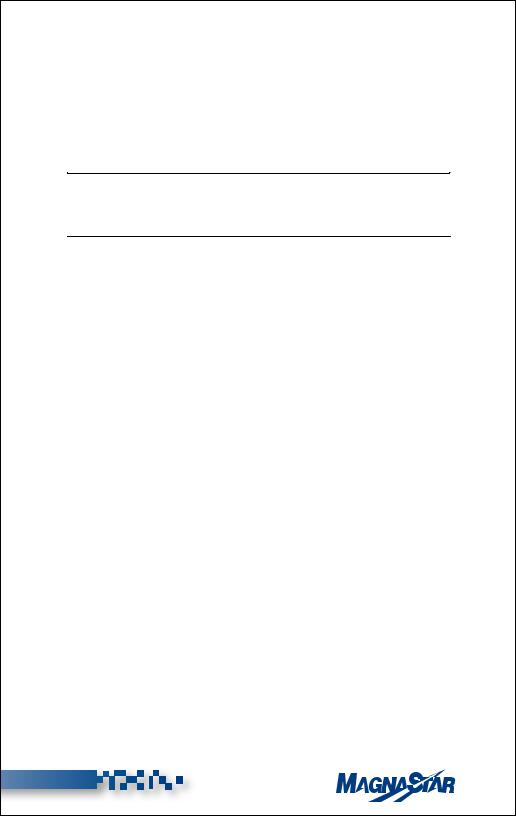
b.Conference Controller. The conference controller is the only conference member who can add conference members or transfer the conference to another Inplane conference member. By initiating the conference you become the conference controller. Pressing “End Call” during the conference will disconnect you and transfer control of the call to the next Inplane conference member. The party who inherits the conference becomes the conference controller.
NOTE 1: To determine if you are the conference controller, view the handset display while engaged in a conference call. If the option “Put Call on Hold” appears, you are the conference controller.
NOTE 2: Ground based conference members may also be able to add conference members if their phones have a conference capability.
c.Conferences Using Airfone’s Conferencing Service. Conferences with up to four ground parties for both domestic and international conferencing services may be set up using Airfone’s conferencing service. For domestic conference calls, dial *345 and give the operator the telephone numbers of the parties to be conferenced. For international conference calls, dial *678. There is a charge for calls placed using this service.
C9. Call Transfer
Calls may be transferred between parties on-board the aircraft. To do so, place the call in progress on hold by pressing “+” (Put Call on Hold). Add an Inplane conference member by pressing “2” (Inplane) and the Inplane number of the party to whom you are transferring the call. When the party answers, announce that a call is being transferred, press “+”, then either place the handset on-hook or press “End Call.”
17 |
® |
(Rev. 8/04)
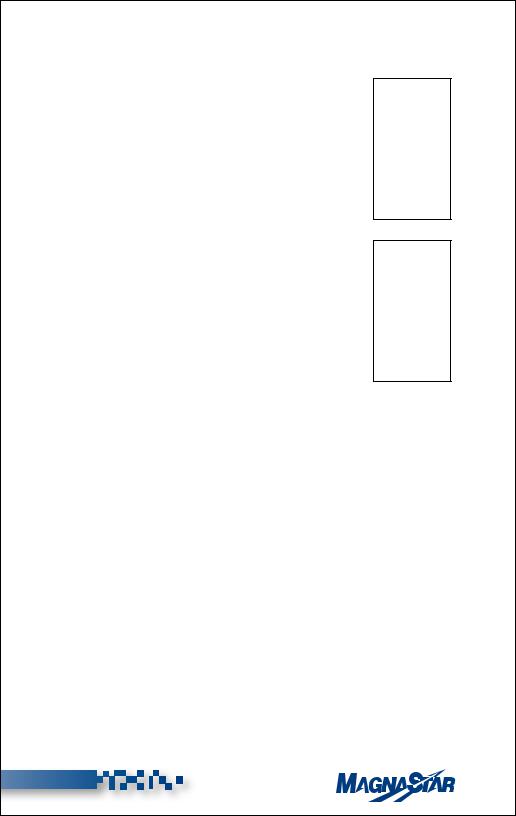
D. Inplane Calls
The inplane calling feature allows you to make calls to other handsets within the aircraft as long as the handset has been assigned an Inplane number. All other handsets which have been assigned an Inplane number are listed on this menu along with their corresponding labels.
To place an Inplane call, place the handset off-hook, press “2” (Inplane) and then press the desired Inplane number.
To end the Inplane call, press “End Call” or place the handset on-hook.
If, while making an Inplane call, the called party is already busy with another call (and Call Waiting is enabled), the called party will hear a “Call Waiting” tone (double beep) and the called party’s handset screen will indicate an incoming call.
Pressing the “+” (Answer) key will place the current call on hold and connect the handset to the calling party.
Enter No.:
___ ________
___ ________
___ ________
___ ________
___ ________
___ ________
___ ________
___ ________
Inplane
Call
From
_____ _______
Answer —>+
The “+” (Put Call on Hold) key can then be used to toggle between the two calls.
Pressing “End Call” key will terminate the current call and connect you immediately to the calling party.
Even though the called party will receive the Call Waiting tone for only a short time period, the called party may answer the incoming call for as long as the handset displays the “Inplane Call From” message.
If Call Waiting is disabled and the called party is already busy with another call, the called party will not be notified of an incoming call and the calling party will hear a busy signal.
18 |
® |
(Rev. 8/04)
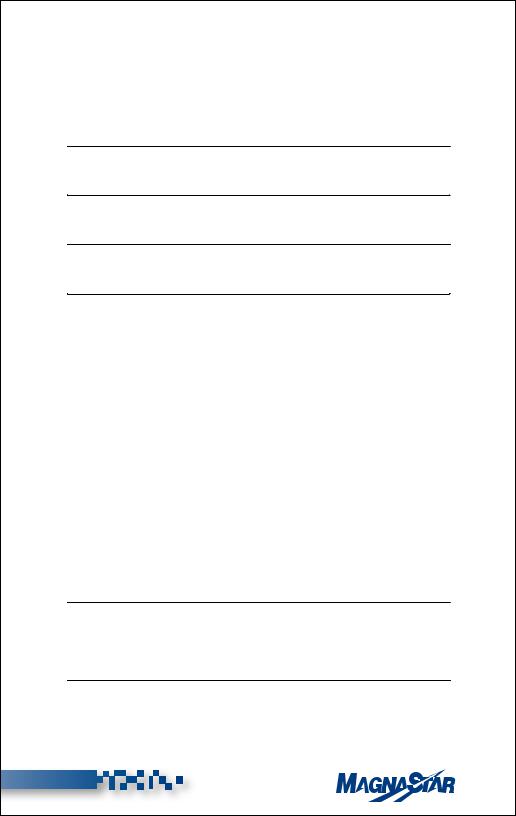
D1. Phone In Use
On the inplane calling menu, the inplane numbers for handset(s) and CDBR-2 port(s) currently off-hook (i.e. a screen other than the “Services” screen is being displayed) are highlighted. This will indicate to the Caller that the Called party is currently using the phone.
NOTE 1: On the inplane calling menu next to each inplane number a user defined label may be included.
NOTE 2: If an inplane number is assigned to a CDBR-2 FAX port, its activity can be monitored from any digital handset in the Aircraft.
NOTE 3: Periodically pressing the “+” key will extend the time period for viewing this menu.
NOTE 4: Refer to section VI, B19 for CAS Set-Up for Call In Progress Indication.
D2. Remote Answer
When a phone in the aircraft is ringing, (Inplane, Air/Ground, or SATCOM), the air traveler can answer the call by taking a non-ringing handset off hook and pressing “9” (Setup). At this point the menu option “Remote Answer->9” will be highlighted indicating that another phone is currently ringing in the aircraft. Press “9” (Remote Answer) to connect to the incoming call.
D3. Call Forwarding
A handset can be configured such that incoming calls (Inplane, Air/Ground, and SATCOM) are automatically redirected to another handset.
The user activates this feature by taking the handset off-hook and pressing “9”’ (Setup) -“6” (Call Fwd), and then enter the “Destination Inplane Number.”
NOTE 1: If activated, Call Forwarding is indicated with high-lighted text on the Source (“Fwd To x”) and Destination (“Fwd From y”) handsets (with Inplane numbers “x” and “y”) on the “Services” menu (i.e.menu displayed while handset is in bezel).
NOTE 2: If desired, more than one handset can be forwarded to another handset.
19 |
® |
(Rev. 8/04)

The user deactivates this feature by using any of the following options:
Option #1: Take the handset off-hook and press: “9” (Setup) -“6” (Call Fwd) - “Destination Inplane Number” (which is highlighted on menu).
Option #2: Take the handset off-hook and press: “9” (Setup) - “6” (Call Fwd) - “Current Inplane Number” (i.e. forward back to self).
Option #3: Call Forwarding is automatically cleared from memory when the ARTU unit is powered down.
E. Facsimile Calls (Using PC or Fax)
If you wish to have your fax machine or PC/Modem dial telephone numbers, you must make certain that your equipment dials using tones (DTMF) and the RJ-11 cord must be connected prior to initiating a call.
It is highly recommended that a 4-prong RJ-11 cord be used for fax and modem connections. Some fax/modem equipment uses additional signaling that can be utilized by the C-2000 system to provide enhanced performance. The 4-prong connector enables access to that signaling.
The MagnaStar C-2000 and the Airfone system provide connections for Group 3 facsimile equipment. Please note that not all manufacturers comply with Group 3 equipment specifications.
In order to optimize fax performance when sending or receiving a fax:
•Both the airborne and ground fax equipment should have Error Correction Mode (ECM) enabled, if supported by the particular models being used.
•Limiting the number of pages sent at any one time will help ensure complete transmission without interruption.
20 |
® |
(Rev. 8/04)
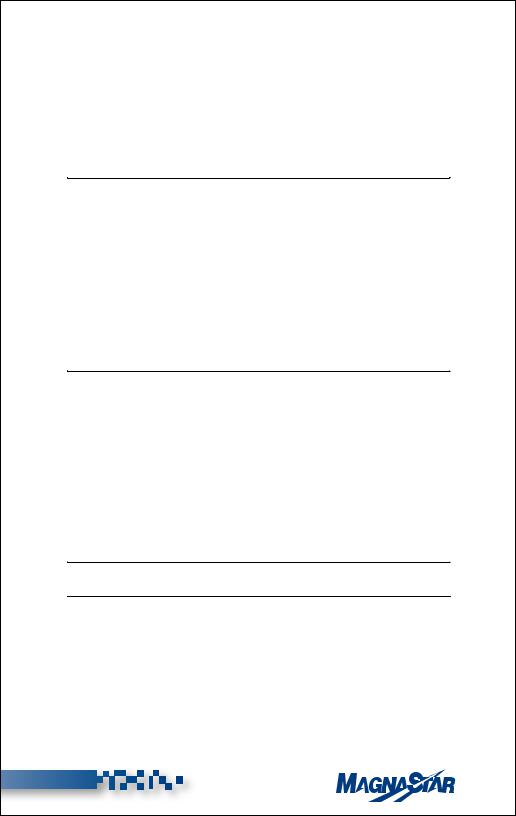
E1. Facsimile Calls Using a C-2000 Handset
Sending a Fax
1.Plug fax machine or PC into Handset.
2.If using a fax machine, insert document into the feeder.
3.Take handset off hook and verify dial tone.
NOTE: Some fax machines do not support a dialing capability.
In this case, the call must be dialed from the C-2000 handset.
In some instances, the airborne party may wish to dial a voice call to the ground fax machine’s number prior to sending the fax. To switch the voice mode call to fax mode, press “+” (Put Call on Hold) followed by “3” (Fax) after the conversation is completed.
4.Establish a fax mode call by pressing “3” (Fax) on either the C-2000 handset, the PC, or the fax machine.
NOTE: It is not necessary to press “3” (Fax) if this C-2000 handset has been configured as a Fax Station (See Section VI, B5). If the handset has been configured as a PC station, the “3” (Fax) does not have to be entered at the handset, but it must be entered from the PC or fax machine. The
C-2000 system uses the “3” (Fax) to distinguish a fax call from a data call.
5.On the fax machine or PC enter phone # and press “Start/Transmit.”
6.After the fax call is connected, the handset may be placed in its holder.
7.At the completion of the call, press “End Call” to terminate the connection.
NOTE 1: The airborne fax machine should be configured with its redial function off.
NOTE 2: As an alternative, the RJ-11 cord may be connected to a remote RJ-11 jack if one is provided for that handset.
21 |
® |
(Rev. 8/04)
